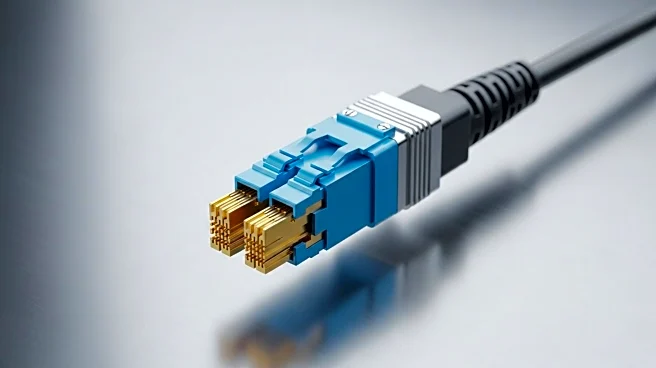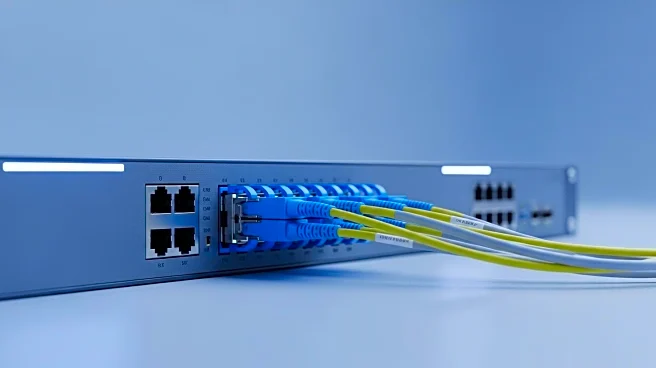What's Happening?
Communications service providers (CSPs) are increasingly interested in adopting 800G coherent pluggable optics, according to a survey conducted by Heavy Reading, now part of Omdia. The survey, which included 80 CSPs globally, revealed that while 800G optics are gaining traction, 400G and 100G data rates remain essential components of CSP networks. CSPs anticipate significant adoption of ultra-high-speed line rates, with 400G leading as the primary line rate in long-haul networks, followed by 800G. In metro networks, 100G and 400G are expected to dominate, while 800G will also play a role. In access/aggregation networks, 100G is expected to be the dominant rate, with contributions from 400G and 10/25G. The survey indicates that 800G coherent pluggable optics will likely become a significant contributor over the next three years, with 58% of CSPs planning to deploy them between 2026 and 2028.
Why It's Important?
The adoption of 800G coherent pluggable optics represents a significant advancement in network capabilities for CSPs, allowing for higher data rates and improved network efficiency. This technology is crucial for CSPs to meet the growing demand for data and to support the expansion of high-speed internet services. The ability to transmit at 400G over distances up to 3,000km with new 120 gigabaud DSPs offers CSPs a competitive edge in delivering long-haul services. Furthermore, the emphasis on multi-vendor interoperability among coherent pluggables highlights the industry's move towards more flexible and adaptable network architectures, which can lead to cost savings and enhanced service offerings.
What's Next?
As CSPs plan to deploy 800G coherent pluggable optics, the focus will be on achieving multi-vendor interoperability in IP over DWDM architectures. This will involve in-house integration testing or outsourcing to ensure compatibility across different vendors. CSPs will need to balance the simplicity of bookended approaches with the flexibility of full interoperability. The deployment timelines suggest that CSPs will continue to evaluate their plans, with some anticipating adoption beyond 2028. The ongoing development and integration of 800G optics will likely drive further innovation in network infrastructure and service delivery.
Beyond the Headlines
The shift towards higher data rates and coherent pluggable optics may have broader implications for the telecommunications industry, including potential changes in regulatory standards and increased competition among equipment manufacturers. The focus on interoperability could lead to new partnerships and collaborations, fostering innovation and potentially reshaping market dynamics. Additionally, the environmental impact of deploying advanced optics and the sustainability of network expansions may become more prominent considerations for CSPs and stakeholders.










